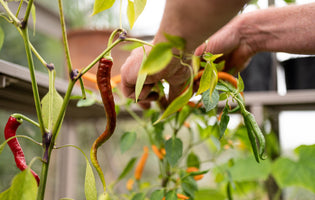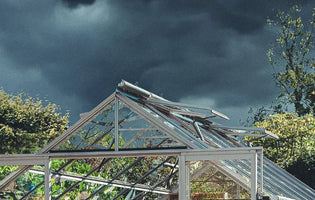Being outside in the fresh air played a pivotal role for many during Covid in maintaining people’s mental health. Gardening became a new passion, not just for the mental health benefits but for the physical aspects, too. Indeed, our survey revealed that 70% of people that spent time in the garden said it helped their mental health.
Gardening should be and must be, accessible to all, and that includes wheelchair-friendly greenhouses for all-year-round gardening. Standard greenhouses have several drawbacks that make it difficult for wheelchair users and other people with disabilities, not only to access them but with the necessary adaptations for ease of use.
Differences between standard and accessible greenhouses
There are differences in the structure of the greenhouse and internally, such as shelving, equipment and even wheelchair-height water reservoirs. So, what do you need to consider when choosing a wheelchair-friendly greenhouse?
- The doorway. Standard greenhouse doors are 0.6m in width. Now, if the greenhouse is big enough to accommodate double sliding doors, there will be a maximum of 2m space for a wheelchair. But if not, the average wheelchair is 0.7m in width, so a single door won’t be wide enough. Accessible greenhouses have a minimum 1.2m single-door width, allowing plenty of room.
- Entrance threshold. Another key area is the doorway threshold which often involves a ramp 4” to 6” high. Wheelchair-friendly greenhouses have a much lower threshold, generally around 2” to 4”, making access much easier. Some greenhouse manufacturers don’t have a threshold at all.
- The base. The material used for the base of the greenhouse can make a big difference. The best option for maneuverability is paving slabs throughout the greenhouse, but make sure they are flat and even. A concrete base is also suitable but will be more expensive and make it far harder to relocate the greenhouse if needed. You will also need to consider the path to the greenhouse, so you may want to sink the paving slabs into a lawn or build a ramp with a slight incline, depending on where the greenhouse is sited.
There is also the inside of the greenhouse to consider when making an accessible greenhouse fully usable.
Greenhouse adaptations for accessibility
The priority is to keep as much as possible at a level easy for the wheelchair user, as continuous bending down to the floor is not feasible.
- Staging and shelves. Make sure they are at a comfortable height for the person and that the support legs are angled backwards to allow room for wheelchairs to fit underneath. Freestanding staging may be unsuitable as many units come with a slatted shelf underneath, which stops the wheelchair from sliding in below.
- Raised beds. For any beds fitted into the greenhouses, make sure they are raised to reduce the bending needed when tending the plants or harvesting. Add raised beds in the garden, too, and you don’t have to buy them. Get inventive. For example, stack up a few used tires and plant in the middle, or reuse wood pallets.
- Potting shelf/water reservoir. These can be fixed or freestanding. They make it easy for wheelchair users and other people with disabilities to enjoy potting out seedlings and watering.
- Automatic window openers. Fitting automatic openers to the apex windows means wheelchair users can ensure plenty of ventilation in the greenhouse. Louvred side windows provide ease of use when opening and shutting them. At Greenhouses Direct, our Rhino Premium greenhouses come with roof vents fitted with solar-powered automatic openers. You could even fit storm locks to protect the greenhouse during rough winter weather.
Fitting an automatic watering system will help those with a disability, giving them peace of mind that their plants remain hydrated without having the hassle of a hose or watering cans. You can also extend the automatic watering system into the rest of the garden.
Throughout the garden, add wide paths and turning circles for wheelchairs. Ideally, paths should be 1.8m in width, but most gardens can’t accommodate that. So, make sure they are at least 1.2m in width. They should be a paved, concrete, brick or another non-slip, even surface to aid mobility around the garden. Keep paths clear of obstacles, like freestanding pots, watering cans, tools or anything else that can impede access, particularly for wheelchairs.
If there are any stepped areas, build ramps where you can with as small an incline as possible. Also, if you have space, slot in a bench for resting. Again, you don’t have to buy one. Source some old sleepers and stack them up to make a cozy bench.
Consider your planting strategy; put taller plants to the back of the beds and lower ones in front so none of the plants block each other out at waist height. Avoid plants that may overhang the raised bed, or they could be damaged as wheelchairs move around the garden. Add as many sensory varieties of plants as you can with lots of color and scents, like lavender, sweet peas and roses. Train Jasmine and Honeysuckle up a fence or even a tree. Herbs are great sensory plants, including rosemary, sage, mint and the curry plant. Some plants react when touched, such as Mimosa pudica, which grows well in greenhouses.







